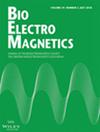求助PDF
{"title":"Radiofrequency Exposure Levels in Greece","authors":"Charilaos Tyrakis, Kiki Theodorou, Yiannis Kiouvrekis, Aris Alexias, Constantin Kappas","doi":"10.1002/bem.22434","DOIUrl":null,"url":null,"abstract":"<p>Medical Physics Department (Medical School, University of Thessaly) participated in a Greek National EMF research program (EDBM34) with the scope to measure and evaluate radiofrequency (RF) exposure (27–3000 MHz) in areas of sensitive land use. A thousand (1000) measurements were carried out at two “metropolitan locations” (Athens and Thessaloniki: 624 points) and several rest urban/rural locations (376 points). SRM 3006 spectrum analyzer manufactured by Narda Safety Test Solutions was used. The broadband mean electric field in metropolitan areas was 0.41 V/m, while in the rest of Greece was 0.36 V/m. In metropolitan areas, the predominant RF source was the TV and Radio FM signals (36.2% mean contribution to the total RF exposure level). In the rest areas, the predominant source was the systems of the meteorological and military/defensive service (31.1%). The mobile sector contributed 14.9% in metropolitan areas versus 12.2% in the rest of Greece. The predominant mobile source was 900 MHz in both cases (4.5% in metropolitan areas vs. 3.3% in the rest of Greece). The total exposure from all RF sources complied with the International Commission on Non-Ionizing Radiation Protection (ICNIRP) 2020 safety guidelines [ICNIRP, 2020]. The maximum exposure level was 0.129% of the limit for the metropolitan areas vs. 0.110% for the rest of Greece. Nonremarkable differences between metropolitan areas' exposure and the rest of Greece. In most cases, new 5 G antennas will be added to the existing base stations. Thus, the total exposure may be increased, leading to higher safety distances. © 2023 Bioelectromagnetics Society.</p>","PeriodicalId":8956,"journal":{"name":"Bioelectromagnetics","volume":"44 1-2","pages":"17-25"},"PeriodicalIF":1.2000,"publicationDate":"2023-02-14","publicationTypes":"Journal Article","fieldsOfStudy":null,"isOpenAccess":false,"openAccessPdf":"","citationCount":"0","resultStr":null,"platform":"Semanticscholar","paperid":null,"PeriodicalName":"Bioelectromagnetics","FirstCategoryId":"99","ListUrlMain":"https://onlinelibrary.wiley.com/doi/10.1002/bem.22434","RegionNum":3,"RegionCategory":"生物学","ArticlePicture":[],"TitleCN":null,"AbstractTextCN":null,"PMCID":null,"EPubDate":"","PubModel":"","JCR":"Q3","JCRName":"BIOLOGY","Score":null,"Total":0}
引用次数: 0
引用
批量引用
Abstract
Medical Physics Department (Medical School, University of Thessaly) participated in a Greek National EMF research program (EDBM34) with the scope to measure and evaluate radiofrequency (RF) exposure (27–3000 MHz) in areas of sensitive land use. A thousand (1000) measurements were carried out at two “metropolitan locations” (Athens and Thessaloniki: 624 points) and several rest urban/rural locations (376 points). SRM 3006 spectrum analyzer manufactured by Narda Safety Test Solutions was used. The broadband mean electric field in metropolitan areas was 0.41 V/m, while in the rest of Greece was 0.36 V/m. In metropolitan areas, the predominant RF source was the TV and Radio FM signals (36.2% mean contribution to the total RF exposure level). In the rest areas, the predominant source was the systems of the meteorological and military/defensive service (31.1%). The mobile sector contributed 14.9% in metropolitan areas versus 12.2% in the rest of Greece. The predominant mobile source was 900 MHz in both cases (4.5% in metropolitan areas vs. 3.3% in the rest of Greece). The total exposure from all RF sources complied with the International Commission on Non-Ionizing Radiation Protection (ICNIRP) 2020 safety guidelines [ICNIRP, 2020]. The maximum exposure level was 0.129% of the limit for the metropolitan areas vs. 0.110% for the rest of Greece. Nonremarkable differences between metropolitan areas' exposure and the rest of Greece. In most cases, new 5 G antennas will be added to the existing base stations. Thus, the total exposure may be increased, leading to higher safety distances. © 2023 Bioelectromagnetics Society.
希腊的射频暴露水平
医学物理系(色萨利大学医学院)参加了希腊国家电磁场研究方案(EDBM34),其范围是测量和评估敏感土地使用地区的射频(27-3000兆赫)暴露。在两个“大都市”(雅典和塞萨洛尼基:624点)和其他几个城市/农村地区(376点)进行了1000次测量。使用Narda Safety Test Solutions公司生产的SRM 3006频谱分析仪。大都市地区的宽带平均电场为0.41 V/m,而希腊其他地区为0.36 V/m。在大城市地区,主要的射频源是电视和广播调频信号(平均占总射频暴露水平的36.2%)。其余地区的主要来源为气象和军事/防御服务系统(31.1%)。在希腊的大都市地区,移动部门占14.9%,而希腊其他地区占12.2%。在这两种情况下,主要的移动源都是900 MHz(在大都市地区为4.5%,在希腊其他地区为3.3%)。所有射频源的总暴露量符合国际非电离辐射防护委员会(ICNIRP) 2020年安全指南[ICNIRP, 2020]。大都市地区的最大暴露水平为限值的0.129%,而希腊其他地区为0.110%。大都市地区与希腊其他地区的风险敞口差异不大。在大多数情况下,新的5g天线将被添加到现有的基站。因此,总暴露量可能会增加,从而导致更高的安全距离。©2023生物电磁学学会。
本文章由计算机程序翻译,如有差异,请以英文原文为准。


